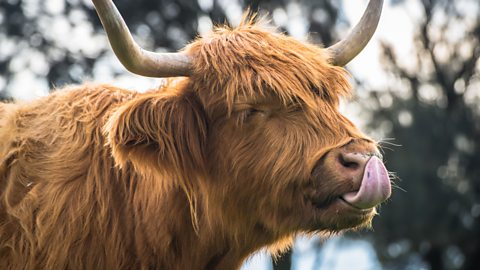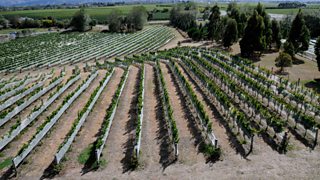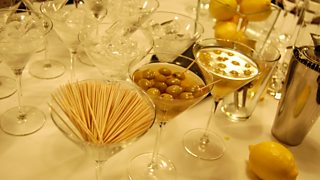The Renaissance of Vodka: past, present and future
Vodka is a spirit with a rich cultural history. In a host of European countries, like Russia and Poland, it’s been distilled for centuries. In the West, it's traditionally been considered a base for other flavours, or something to be knocked back as quickly as possible. But today, craft distillers are experimenting with vodka and proving it’s much more than just a neutral spirit.
In High Spirits: A story of vodka, Jaega Wise learns about the drink’s origin and evolution and asks, is the time right for a vodka renaissance?
What is vodka?
Legally, in the European Union, vodka is spirit made from ethyl alcohol of agricultural origin that has been distilled up to 96% abv (alcohol by volume)
“Legally, in the European Union, vodka is spirit made from ethyl alcohol of agricultural origin that has been distilled up to 96% abv,” explains Veronika Karlova, a drinks writer, chair judge for the World Vodka Awards and founder of GirlsDrinkVodka.com (an online platform connecting likeminded enthusiasts). You might think distilling something up to 96% will strip it of all flavour and character, but there are significant differences between individual samples, says the vodka aficionado. It all depends on the base spirit that is used to make the vodka.

You can make vodka from anything that ferments
Grains and potatoes are the most popular bases from which to make vodka, says Veronika. From grains, wheat is top of the list, especially in Russia. Other grains include barley, rye, and corn, with the latter being the most popular grain for vodka production in the U.S.. Then you’ve got vodka made from rice and potato-based spirit, which is very popular in Poland. “Anything that ferments, pretty much, you can make vodka from,” says Veronika.
Some vodka is made from milk
“Lactose used to go to feed pigs but what we’re doing is making it into vodka,” says Jason, dairy farmer and co-founder of the Dorset based vodka company, Black Cow. “We make our Black Cow vodka entirely out of milk.” Co-founder Archie explains how it works: “There are all sorts of different ingredients within the milk and so once you take out the fat, and you make the cheese, you have whey left over.” The whey is processed to produce permeate, a liquid which is salty and sweet. “That is the perfect stuff to ferment and turn into alcohol.”
Making booze from milk is actually nothing new; there’s a strong historical precedent. For the last three or four thousand years nomadic tribes throughout Kazakhstan, Kyrgyzstan and Mongolia have been making their tipple from either mare’s milk, yak’s milk or cow’s milk.
Vodka's flavour is affected by what it's made from
You might think vodka has a pretty neutral taste, but what it’s made from does affect its flavour profile, says Veronika: “Typically, what we’re looking for in vodka’s distilled from wheat are notes of spiciness – which will be peppery notes, white pepper, black pepper.” There will be a touch of herbal notes as well, so maybe cumin or carraway. “And then there is always going to be some sort of sweetness.”
Russian vodka is most often made from wheat. Polish vodka is frequently made from rice or potatoes. In America, the most popular grain used to create vodka is corn.
Vodka made from barley and rye will deliver more spicey and robust character on the palate, and corn delivers the most sweetness within the base spirit.
“Then moving onto potatoes, you get a lot of earthy notes, creamy palate and the vegetable aftertaste,” she says.
Crucially, you have to train your palate to recognise these subtle flavour differences, says the tasting expert. Vodka doesn’t have botanicals and it’s not mature so that’s the “biggest challenge”.

Vodka made from milk: udderly ridiculous?
Jason Barber was trying to work out how he could make two pence a litre more on his milk.
Always taste your vodka at room temperature β and donβt sniff it too hard!
“I always recommend tasting vodka at room temperature,” says Veronika. “This is the way you get the most nuances out of it.” First, she says, “have a little nose over the glass” – but don’t breathe in hard because all you’re going to get is ethyl alcohol! A swift waft across the nose is the best approach. With your first taste, because your palate isn’t yet ready for the kick, have a little sip and then wait ten or twenty seconds before sipping again. Then hopefully the sample will “open up.”
Whether it was the Russians or the Polish who βinventedβ vodka is a major bone of contention. It's likely to have developed simultaneously in different regions.
No one can be sure where vodka was first made
“Vodka has always been connected to Russia and Poland and Baltic states and Scandinavia, so those were the first countries where vodka was produced,” says Veronika. Whether it was the Russians or the Poles who “invented” vodka is a major bone of contention (and a topic best avoided!) but she believes it developed simultaneously in different regions.
Vodka used to be called aqua vitae - water of life
Historically, vodka tasted very different and had a lot of character, because it was before the invention of the column still and filtration. It was normally infused with herbs or other flavours and used for medicinal purposes. People used to call it “aqua vitae”, Latin for “water of life".
-
![]()
High Spirits: A story of vodka
Jaega Wise learns about the origin and evolution of vodka.
Where we grow up affects how we drink our vodka
“Vodka was always part of our culture so we always had a bottle of vodka on the table,” recalls Veronika, who was born in Slovakia. It was very typical for all the neighbours and her father to distil their own vodka. “Any time we celebrate anything, any wedding, or birthdays, we would obviously celebrate with vodka.” And it isn’t drunk with mixers, like it tends to be in the UK. “We do shots,” says the Slovakian. There’s also a lot of food involved: pickles, homemade sausages and cheese. If they’re doing shots throughout the night, they will be eating too.
Norwegian bartender Monica Berg says it’s the same in her home country. “Vodka has always been a part of the culture in the whole of Scandinavia,” she says. “Traditionally the way that I saw it growing up it would be more as an accompaniment to food.”
Some distillers add fruit, salt and even bacon to their vodka
Jan Woronieki is the founder of vodka brand Kavka. He explains how they add very small quantities of aged fruit spirits to a blend of rye and wheat spirit to create their product. “It’s very subtle but the fruit spirits give it a depth, a complexity and a smoothness which you don’t normally find in a vodka,” claims Jan.
At Isle of Wight Distillery, they add local salt during the production process to give their Mermaid Salt Vodka a unique mineral flavour.
And going even further off-piste is the brand Bakon vodka. The clue’s in the name: it’s made by steeping cooked bacon in vodka – more specifically a smoked pepper bacon in a potato vodka – and it’s been a hit with bloody Mary fans.

Thereβs now a carbon negative vodka
Arbikie Distillery in Scotland is a “field to bottle” distillery based on Scotland’s East coast. It was set up by Iain Stirling and his brothers, in the Arbikie location where they’ve been farming for over four generations. Their latest spirit is Nàdar vodka: “the world’s first climate positive vodka”, Iain claims. It’s distilled from Daytona peas which they grow on the farm. “As the peas grow, they remove carbon from the atmosphere and at the same time give a free nitrogen fix to the soil, hence the reason why Nàdar vodka is carbon negative: -1.54 kilos per 70cl bottle.” The peas are mashed, fermented, distilled and bottled, with the pea waste being fed to their “very happy” cattle.
People have drunk an awful lot of gin lately so we do think thereβs going to be a vodka renaissance.Paul (Archie) Archard, co-founder of Black Cow
Is vodka having a revolution?
Vodka is versatile. It can be used as an ingredient to cook with, it can be used in cocktails, and it can be drunk neat poured over ice. Just as gin’s popularity has boomed in recent years, is vodka about to have its moment?
“I think its moment’s going to come soon,” says Archie from Black Cow. And he believes the COVID pandemic and lockdown life will have been a catalyst. “The utility and the universality of it lends itself to doing things at home with it, and I think people have drunk an awful lot of gin lately so we do think there’s going to be a vodka renaissance.” He thinks the vodkas leading the charge will be there because of their provenance, their quality and their sustainability. “I think that’s what the resurgence will come from: quality.”
Learn more about the origins and evolution of this traditionally neutral spirit on The Food Programme.
-
![]()
The Food Programme: High Spirits
Jaega Wise learns about the origin and evolution of vodka.
-
![]()
Climate change is increasing the strength of wine
Wine makers, importers, and sellers are discovering wine is getting stronger.
-
![]()
11 things you didn't know about aperitifs
Aperitifs have long captured our imaginations.
-
![]()
How the potato evolved: from poison, to suspicion, to empire
Potatoes originally had to be eaten with soil, otherwise they were poisonous.




